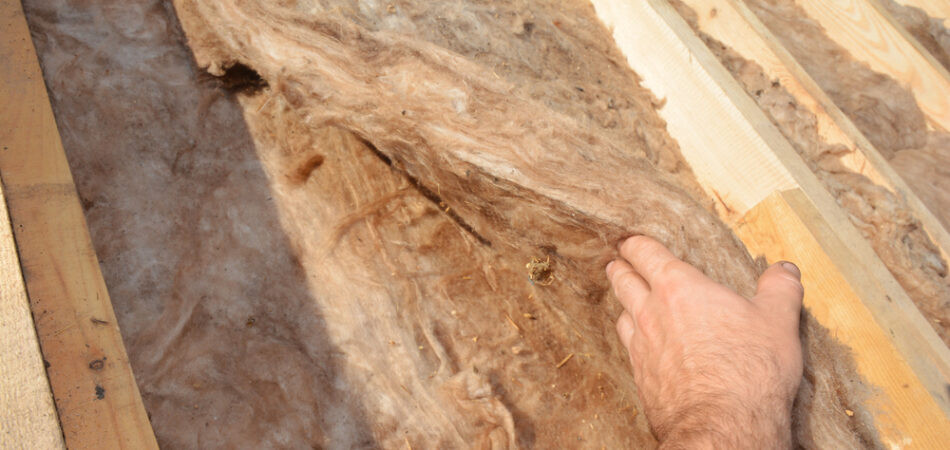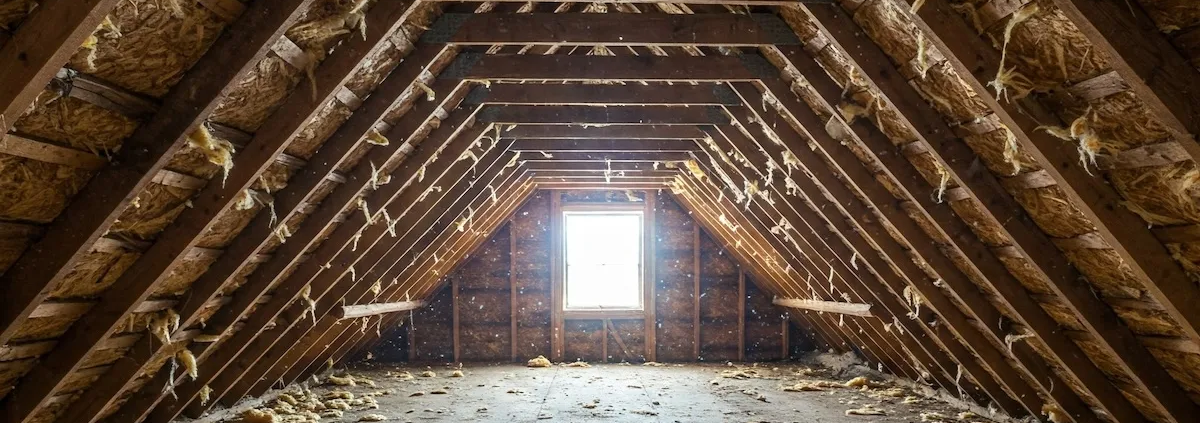5 Reasons Your Current Insulation Is Ineffective and Needs Updating
Many homeowners are paying unnecessarily high energy bills and living in uncomfortable homes without realizing that the root cause is hiding behind their walls and in their attic. The home’s insulation, while out of sight, is a critical component of its performance, and over time, it can become highly ineffective. The five most common reasons for this failure are physical degradation from age, insufficient R-value by modern standards, damage from moisture or pests, an inability to stop air leakage, and poor initial installation. When these issues are present, the expert insulation can no longer do its job, leading directly to wasted energy and a less comfortable living environment.
This guide will break down each of these five reasons, explaining how to spot the signs of ineffective insulation and what can be done about it. The information is based on the practical, hands-on experience of building science professionals who diagnose and solve these hidden home performance issues every day.
1. It Has Settled or Degraded Over Time
Like many building materials, some types of insulation have a finite effective lifespan. This is especially true for older loose-fill products that were common in homes built decades ago.
The Problem of Compaction
Older forms of cellulose and fiberglass insulation are susceptible to settling and compacting over time. Gravity, combined with vibrations in the home, can cause these materials to lose their “loft,” or fluffiness. Because the effectiveness of these materials comes from the air they trap, this loss of loft directly translates to a lower R-value. In walls, this can leave a significant uninsulated gap at the top of the stud bay. In an attic, it means the overall thickness of the insulation blanket is reduced, creating a weaker thermal barrier.
2. It Fails to Meet Modern R-Value Standards
Even if your insulation is in perfect physical condition, it might still be completely inadequate by today’s standards. Building codes and our understanding of energy efficiency have changed dramatically over the years.
Raising the Bar for Efficiency
A home built in the 1980s or 90s may have been considered well-insulated at the time, but it likely has far less insulation than what is recommended today. For example, it was common for attics in many parts of the country to be insulated to R-19. Today, in a climate like Georgia’s, the building code requires a minimum of R-38 in the attic. This means many existing homes have half the attic insulation they should, leading to massive energy loss, particularly through the ceiling.
Here is a look at how different insulation types stack up in terms of thermal performance:
| Insulation Type | Typical R-Value (per inch) | Common Application | Lifespan Consideration |
|---|---|---|---|
| Closed-Cell Spray Foam | R-6.0 – R-7.0 | Attics, Walls, Crawl Spaces | Does not degrade or settle. |
| Open-Cell Spray Foam | R-3.5 – R-3.7 | Attics, Walls | Does not degrade or settle. |
| Fiberglass Batts | R-3.1 – R-3.8 | Walls | Can have gaps if not installed perfectly. |
| Blown-in Fiberglass | R-2.2 – R-2.7 | Attics | Does not settle over time. |
| Blown-in Cellulose | R-3.2 – R-3.8 | Attics | Can settle and compact over decades. |
3. It Has Been Damaged by Moisture or Pests
Water and pests are two of the biggest enemies of an effective insulation system. Any past or present issue with either can render your insulation useless.

The Impact of Water
A roof leak, a plumbing issue, or even a bathroom fan venting improperly into the attic can introduce moisture to the insulation. When fibrous insulation like fiberglass or cellulose gets wet, it clumps together and loses its ability to trap air. It becomes a dense, soggy mat that provides almost no R-value. Even after it dries, it will never regain its original performance. Furthermore, damp insulation is a primary breeding ground for mold and mildew, which can rot the home’s structure and create serious indoor air quality problems.
Damage from Pests
Rodents, insects, and other pests love to make their homes in soft, fluffy insulation. They will tunnel through it, tear it apart to build nests, and contaminate it with their droppings. This activity destroys the integrity of the insulation blanket, creating massive gaps and voids that allow heat to pass through freely.
4. It Doesn’t Stop Air Leakage
This is arguably the most significant reason why older insulation systems are ineffective. Traditional insulation materials are designed to slow down heat transfer, but they do nothing to stop air from moving.
The Windbreaker Analogy
Think of your insulation like a wool sweater. It is great at keeping you warm on a calm day. But if the wind picks up, it blows right through the sweater, and you get cold. You need an outer layer, a windbreaker, to stop the air. In a house, the insulation is the sweater, and a dedicated air barrier is the windbreaker. Older homes often lack a proper air barrier. Air can leak in and out through countless small gaps, bypassing the insulation and carrying your expensive conditioned air with it. Studies have shown this air leakage can be responsible for up to 40% of a home’s energy loss.
Bonus Tip: A modern material like spray foam insulation addresses this problem because it can act as both the insulation and the air barrier in one application. When retrofitting an attic with new blown-in insulation, it is critical to have a professional air seal the attic floor first to stop these leaks.
5. It Was Installed Incorrectly from the Start
The performance of any insulation, but especially fiberglass batts, is extremely dependent on the quality of the initial installation. Unfortunately, this is an area where corners were often cut.

The Cost of a Sloppy Installation
For Professional insulation to work correctly, it must be installed in a way that it completely fills the wall cavity with no gaps, voids, or compression. Common mistakes include:
- Leaving gaps around electrical boxes and wiring.
- Compressing the batts to fit into a space that is too small.
- Not cutting the batts to the proper length, leaving them buckled or bunched up.
Even small gaps can lead to a significant reduction in the effective R-value of the entire wall. A poorly installed insulation job will never perform as it was designed to.
Things to Consider Before Updating Your Insulation
- Get a Professional Inspection: The first step is to have a qualified insulation contractor inspect your attic and other accessible areas. They can measure your current insulation depth, identify signs of damage, and locate the major sources of air leakage.
- Prioritize the Attic: For most homes, the attic is the most critical and cost-effective area to upgrade. This is where the most heat is gained in the summer and lost in the winter.
- Evaluate Your Options: The right solution depends on your situation. Sometimes, simply adding a thick new layer of blown-in insulation over the top of the old is sufficient. In other cases, where the old insulation is badly damaged, a full removal and replacement might be necessary.
Bonus Tip: Consider investing in a professional energy audit. An auditor can use tools like a blower door test and an infrared camera to give you a data-driven report on your home’s performance and a clear roadmap for the most effective upgrades.
Questions People Ask About Ineffective Insulation
How can I tell if my insulation is settled?
In an attic, you can do a simple visual check. If the insulation is below the tops of the wooden joists, it is almost certainly insufficient. In walls, you would need to use an infrared camera to see the cold spots at the top of the wall cavities where the insulation has settled.
What is the ROI on an insulation upgrade?
Upgrading attic insulation is consistently ranked as one of the home improvement projects with the highest return on investment. It is not uncommon for the project to pay for itself in just a few years through lower monthly energy bills.
Will new insulation make my home completely silent?
While new insulation, especially products designed for sound control, can significantly reduce noise, it will not make a home completely soundproof. True soundproofing involves other techniques like adding mass and decoupling the drywall.
My energy bills are high, but my house is new. Could the insulation still be the problem?
Yes. Unfortunately, many new homes are built with only the minimum amount of insulation required by code and with very little attention paid to air sealing. An upgrade can often make a big difference even in a newer home.
Final Thoughts on a High-Performing Home
If your home is drafty, uncomfortable, and expensive to heat and cool, there is a very good chance that your insulation is no longer effective. By understanding the common reasons for failure, homeowners can take the first step toward a solution. An insulation upgrade is an investment that pays for itself through lower energy bills, improved comfort, and a healthier living environment for years to come.
Get a Professional Home Performance Assessment
To get a clear picture of your home’s current insulation performance and to explore the most effective solutions, the best first step is a professional evaluation. An experienced insulation contractor can provide a thorough inspection and a detailed plan of action. For homeowners looking for an expert assessment, the team at Premier Insulation offers comprehensive consultations. They can be reached by email at premiereinsulationga@gmail.com or by phone at (229) 554-3939.
Reviewer: Jack Parker, a spray foam professional with 7 years of experience, reviewed this post and helped improve sections dealing with brand clarity and customer communication.



Leave a Reply
Want to join the discussion?Feel free to contribute!